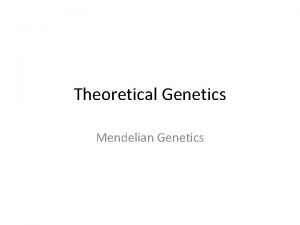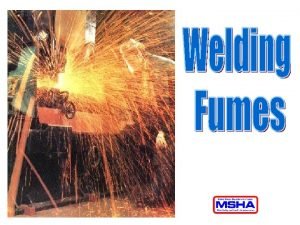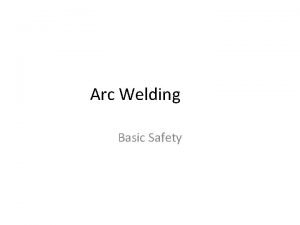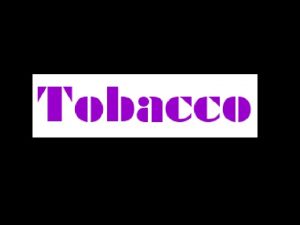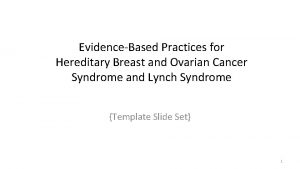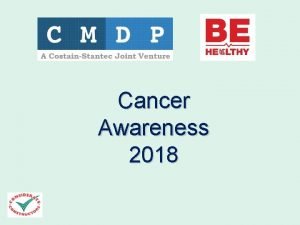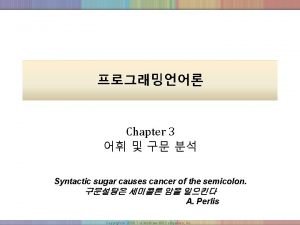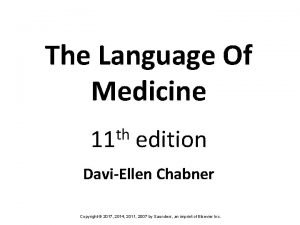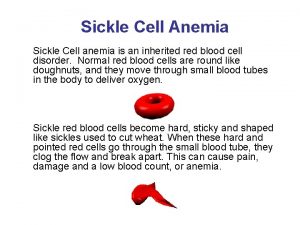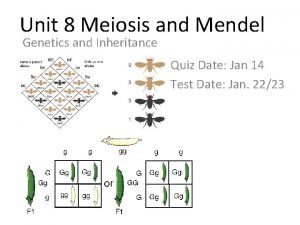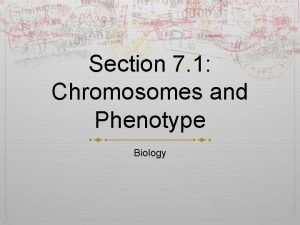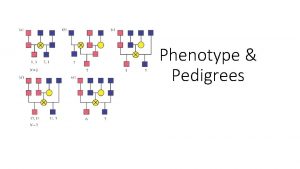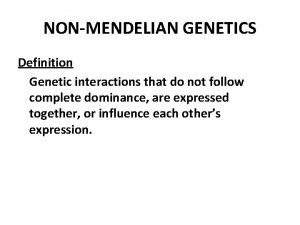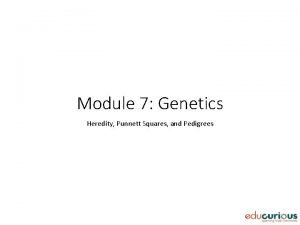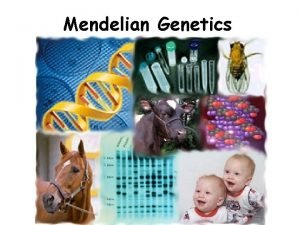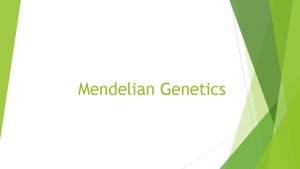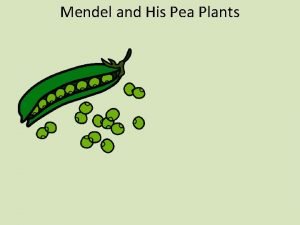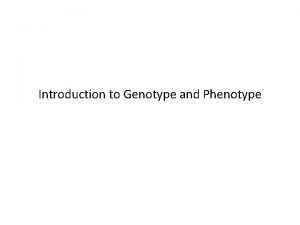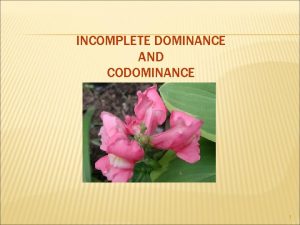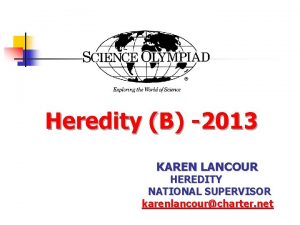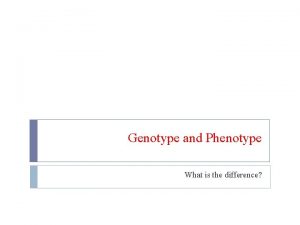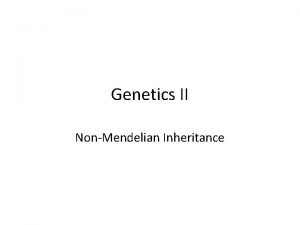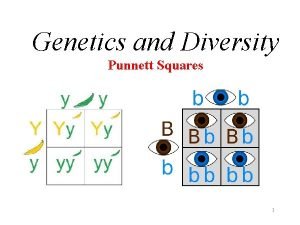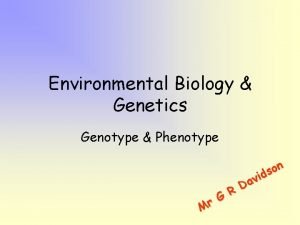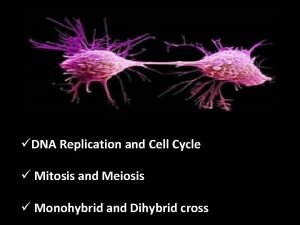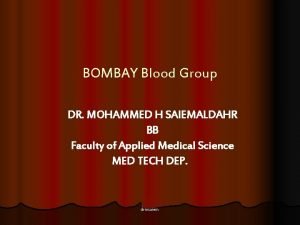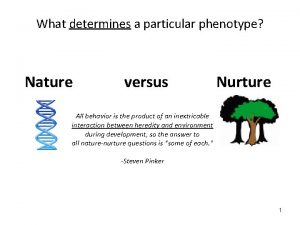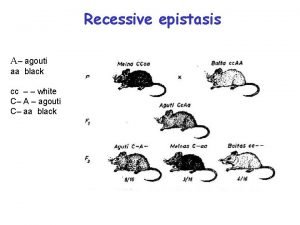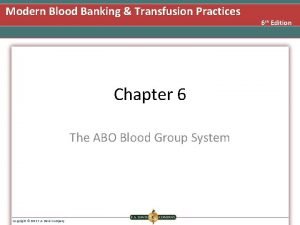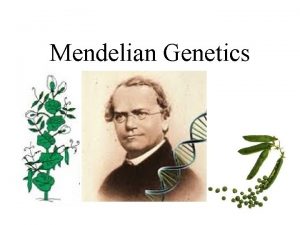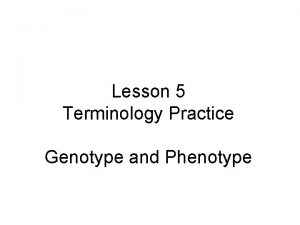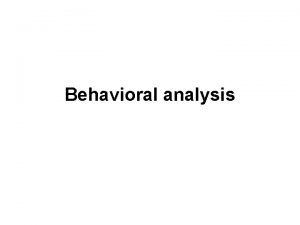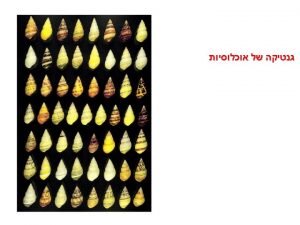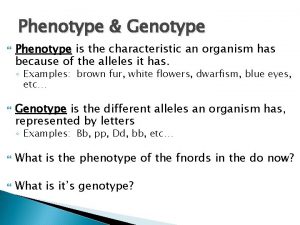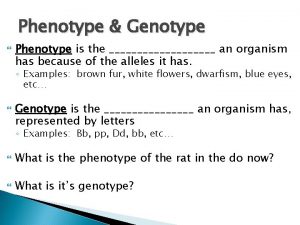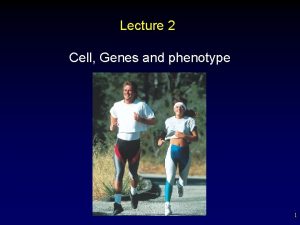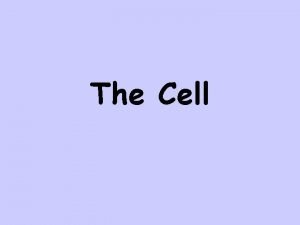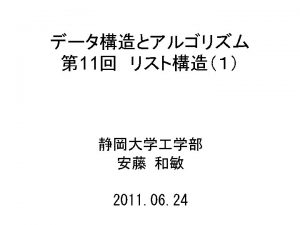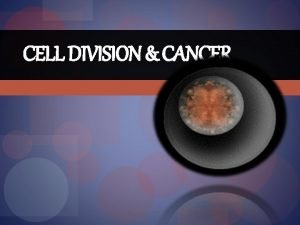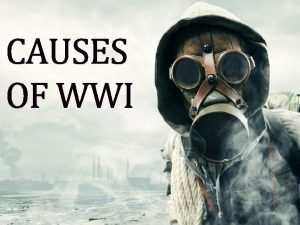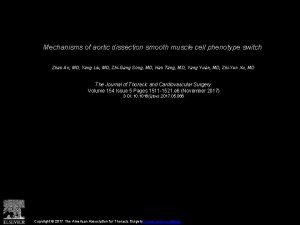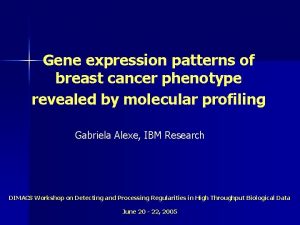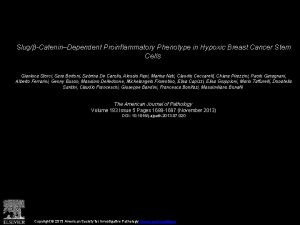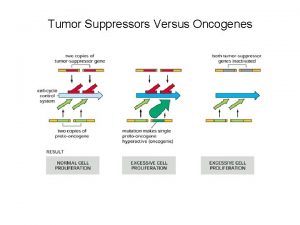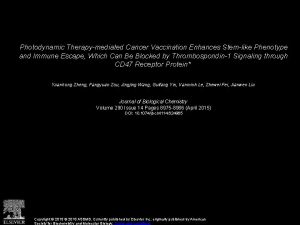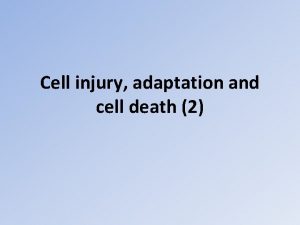Cancer Its Causes Phenotype of a Cancer Cell










































- Slides: 42

Cancer & Its Causes





Phenotype of a Cancer Cell The Six Hallmarks of Cancer Resistance to cell death Activated anti-cell death signalling Sustained angiogenesis Activated VEGF signaling Invasion & metastasis Loss of cell-to-cell interactions

How Cancer Starts Cancer is a broad group of various diseases, all involving unregulated cell growth To understand cancer, we must begin with an understanding of the process of cell division and by looking at the various factors that regulate it

Review of Cell Division

The Eukaryotic Cell Cycle is Regulated by a Molecular Control System The frequency of cell division varies with the type of cell These differences result from regulation at the molecular level Cancer cells manage to escape the usual controls on the cell cycle

The Cell Cycle is Regulated by Internal & External Controls There are specific checkpoints where the cell cycle stops until a go -ahead signal is received Two types of regulatory proteins involved in cell cycle control: cyclins and cyclin-dependent kinases (Cdks) An example of an internal signal is that kinetochores not attached to spindle microtubules send a molecular signal that delays anaphase Some external signals are growth factors, proteins released by certain cells that stimulate other cells to divide. For example, platelet-derived growth factor (PDGF) stimulates the division of human fibroblast cells in culture

Figure 12. 18 Scalpels 1 A sample of human connective tissue is cut up into small pieces. 2 Enzymes digest the extracellular matrix, resulting in a suspension of free fibroblasts. Petri dish 3 Cells are transferred to culture vessels. Without PDGF is a ligand for RTKs and results in division …wounds secrete this to stimulate division/healing (41) 4 PDGF is added to half the vessels. With PDGF 10 m

Other External Signals that Control Cell Division A clear example of external signals is densitydependent inhibition, in which crowded cells stop dividing Most animal cells also exhibit anchorage dependence, in which they must be attached to a substratum in order to divide Cancer cells exhibit neither density-dependent inhibition nor anchorage dependence


Loss of Cell Cycle Controls in Cancer cells do not respond normally to the body’s control mechanisms Cancer cells may not need growth factors to grow and divide They make their own growth factor They may convey a growth factor’s signal without the presence of the growth factor They may have an abnormal cell cycle control system

Loss of Cell Cycle Controls in Cancer A normal cell is converted to a cancerous cell by a process called transformation Cancer cells that are not eliminated by the immune system, form tumors, masses of abnormal cells within otherwise normal tissue If abnormal cells remain at the original site, the lump is called a benign tumor Malignant tumors invade surrounding tissues and can metastasize, exporting cancer cells to other parts of the body, where they may form additional tumors

Angiogenesis • New blood vessel growth • Diffusion limit is a few millimeters • Growth of new vessels is required for tumor growth once tumor is the size of a pea • Tumor cells induce angiogenesis by giving off signals used in normal development and wound healing.

Cancer Angiogenesis

Tumor Progression

Causes of Cancer Regulation of cell division is a balance between: Mitosis - making new cells. Apoptosis - cell suicide or death Cancer can result if either process doesn’t work. Proteins and regulatory RNAs involved in regulating these processes ultimately contribute to development of the disease

Cellular damage elicits abnormal proliferation Damage repair Damage No repair Death Cancer cell Cell Death is important for Damage Control

The Central Dogma DNA RNA Protein

Causes of Cancer Because ultimately all proteins are encoded for by the DNA within the host cell genome, it is here that we have to look for the cause of cancer A gene is a segment of DNA that codes for a protein

DNA inisthethe Occurs nucleus Occursto on build a ribosome in the template cytoplasm or attached to the RER RNA A A T G T C C REPLICATIO N G T C T A T T A C A G G TRANSCRIPTI ON C A G A T A AG U C C G U C U Asparagin The sequence of bases is read in e groups of 3 Each group of 3 bases is called a codon and specifies 1 amino acid Proline TRANSLATION Serine Methionin e

Cancer Arises From Gene Mutations Somatic mutations Germline mutation Parent Mutation in egg or sperm Child All cells affected in offspring Present in egg or sperm l Are heritable l Cause cancer family syndromes l Somatic mutation (eg, breast) Occur in tissues l Are nonheritable l

Mutations & Cancer • Some mutations are spontaneous • Some mutations are caused by environmental mutagens (agents that increase chances of a mutation), such as: • Radiation • Organic chemicals

Mutations & Cancer • Cancer is a genetic disorder caused by a failure in the regulation of gene activity, usually caused by mutation • Carcinogens are mutagens that increase the risk of cancer • Tobacco smoke contains a number of known carcinogens • Hence, lung cancer is #1 lethal cancer in US

• It is possible to inherit a gene that predisposes someone to cancer • Example = BRCA 1 & BRCA 2 genes (breast cancer) - BRAC Analysis • Other known carcinogens are highly linked to certain cancers, for instance: • Tobacco = lung • UV radiation = skin • Human Papilloma Virus (HPV) = cervix

Radiation Effects • Ionizing radiation (X-rays & gamma rays) creates free radicals (ionized atoms with unpaired electrons) • Free radicals react with & alter the structure of molecules like DNA • UV radiation absorbed by pyrimidines (C, T) may cause thymine dimers when 2 thymines are next to each other • Repair enzymes usually fix this problem (cut out, make new, seal in place)

Mutations in DNA Alter Protein Structure A C T G T C C REPLICATIO N G T C T A T G A C A G G TRANSCRIPTI ON C A G A T A CG U C C G U C U A U Threonine Proline TRANSLATION Serine Methionin e

Effect of Mutations on Protein Activity • Effects of mutations on protein activity range from no effect to complete inactivity • Point mutations involve a change in a single DNA nucleotide • Point mutations can lead to normal protein (silent mutation), stop codon (nonsense mutation), or faulty protein because of a change in a single amino acid (missense mutation).

Nonfunctional Proteins • Frameshift mutations occur when one or more nucleotides are inserted or deleted from DNA (results in new codons & nonfunctional proteins) • Nonfunctional proteins can have a dramatic effect on phenotype

Regulation of cell cycle • A tumor is an irregular mass of cells (mutations that cause cell to repeatedly enter the cell cycle) • Proto-oncogenes are genes that promote cell cycle • Tumor-suppressor genes are genes that inhibit cell cycle • Each class of genes involves growth factors (extracellular signaling molecules), along with other genes and proteins that determine which class of genes is active

Oncogenes • A mutation or increased expression may cause a proto-oncogene to become an oncogene (cancercausing gene) • This may code for a faulty receptor, abnormal protein product, or abnormally high levels of product • Researchers have identified over 100 oncogenes that cause increased growth and lead to tumors

Tumor-Suppressor genes • Tumor-suppressor genes, and the proteins for which they code, either • have a dampening or repressive effect on the regulation of the cell cycle • or promote apoptosis • sometimes both

4 Major Classes of Tumor Suppressor Genes • Repression of genes that are essential for the continuing of the cell cycle. If these genes are not expressed, the cell cycle does not continue, effectively inhibiting cell division • Coupling the cell cycle to DNA damage. As long as there is damaged DNA in the cell, it should not divide. If the damage can be repaired, the cell cycle can continue. • Initiation of apoptosis (programmed cell death) • DNA repair proteins are usually classified as tumor suppressors as well

p 53 gene • The p 53 gene (chromosome 17) is a common example of a tumor suppressor gene • This gene is more frequently mutated in human cancers than any other known gene (nearly 1/2 of all cancers) • The p 53 protein is a transcription factor that regulates the cell cycle & also stimulates apoptosis

p 53 gene • If DNA is damaged, p 53 protein inhibits cell cycle (so enzymes can repair damage) • If DNA damage persists, p 53 leads to apoptosis • Many tumors lack active p 53 (no PCD) and some cancers increase bcl-2 (protein that inactivates p 53) • Role of p 53 in cell animation

Cancer involves Multiple Mutations

Cancer Associated Genes

Cancer Cells Don’t Just Grow More than Healthy Cells, they Differ in their Morphology as well

Tying It All Together Cancer arises from a complex interplay among multiple genes and between genes Genes can be altered or mutated in many ways Mutations alter the normal processes that a cell uses to regulate its actions When the processes are disrupted, control is lost, tumor development follows http: //www. cancerquest. org/images/FLV/full. Docu mentary/English/full. Doc. Interface. Eng. swf

Charles Huggins “The thing about cancer is to cure it”
 Sickle cell anemia genotype and phenotype
Sickle cell anemia genotype and phenotype Welding causes cancer
Welding causes cancer Welding safety precautions
Welding safety precautions Tobacco causes cancer
Tobacco causes cancer Tobacco causes cancer
Tobacco causes cancer Ovarian cancer causes
Ovarian cancer causes Tobacco causes _______ of cancer deaths around the world. *
Tobacco causes _______ of cancer deaths around the world. * Syntactic sugar causes cancer of the semicolon
Syntactic sugar causes cancer of the semicolon Proximate vs ultimate causation
Proximate vs ultimate causation Polygyny in animals
Polygyny in animals Genetic causes of cell injury
Genetic causes of cell injury What causes cell
What causes cell Co hemoglobin
Co hemoglobin Widows peak genotype
Widows peak genotype Genotype of tall pea plant
Genotype of tall pea plant Section 1 chromosomes and phenotype
Section 1 chromosomes and phenotype Genotype punnett
Genotype punnett Codominant genes
Codominant genes Pleiotropism definition
Pleiotropism definition A and b punnett square
A and b punnett square Phenotype example
Phenotype example Color blindness punnett square
Color blindness punnett square What is the phenotype of the mother having bbnn genotype
What is the phenotype of the mother having bbnn genotype Phenotype of pea plants
Phenotype of pea plants Genotype
Genotype Genotypic ratio of dihybrid cross
Genotypic ratio of dihybrid cross Phenotype and genotype
Phenotype and genotype Mendel
Mendel Heterozygous example
Heterozygous example Epistasis vs pleiotropy
Epistasis vs pleiotropy Phenotype for blue eyes
Phenotype for blue eyes Phenotype genotype
Phenotype genotype Mitosis vs meiosis
Mitosis vs meiosis What is the difference between phenotype and genotype
What is the difference between phenotype and genotype Bombay phenotype
Bombay phenotype Applying mendels principles
Applying mendels principles Phenotype and genotype
Phenotype and genotype Phenotype
Phenotype Bombay phenotype
Bombay phenotype Abo phenotype and genotype
Abo phenotype and genotype Law of segregation
Law of segregation Recessive trait
Recessive trait Phenotype
Phenotype
